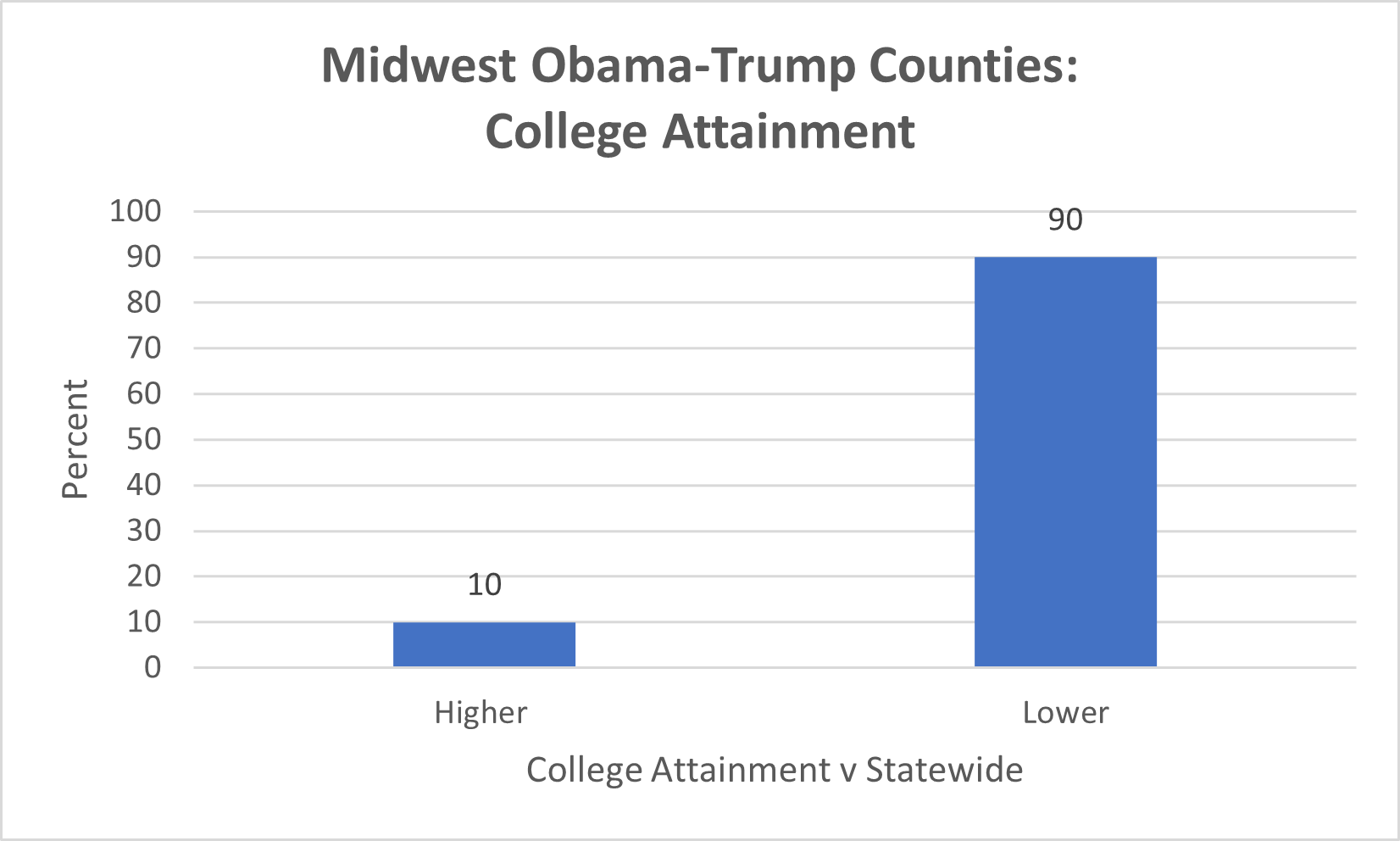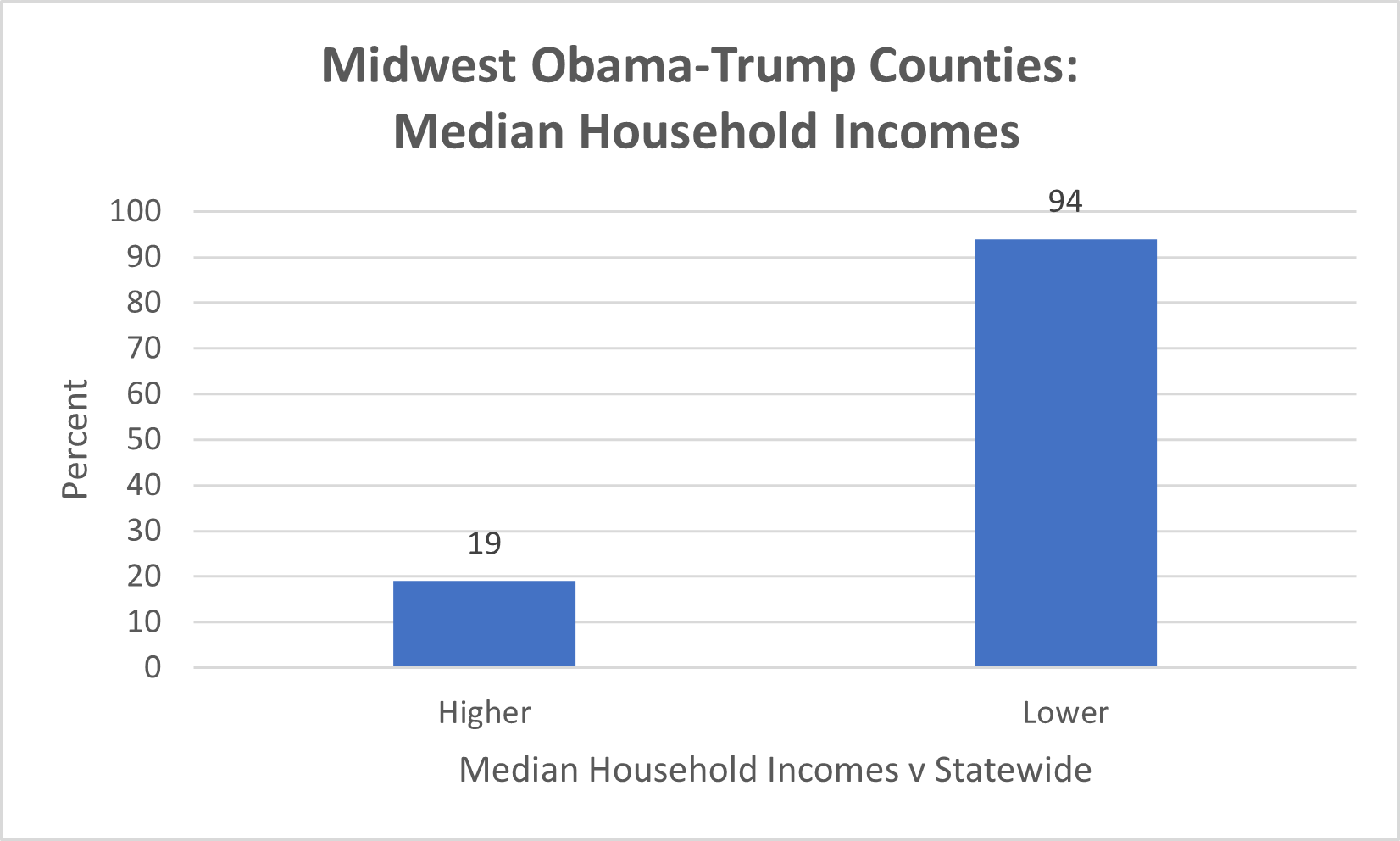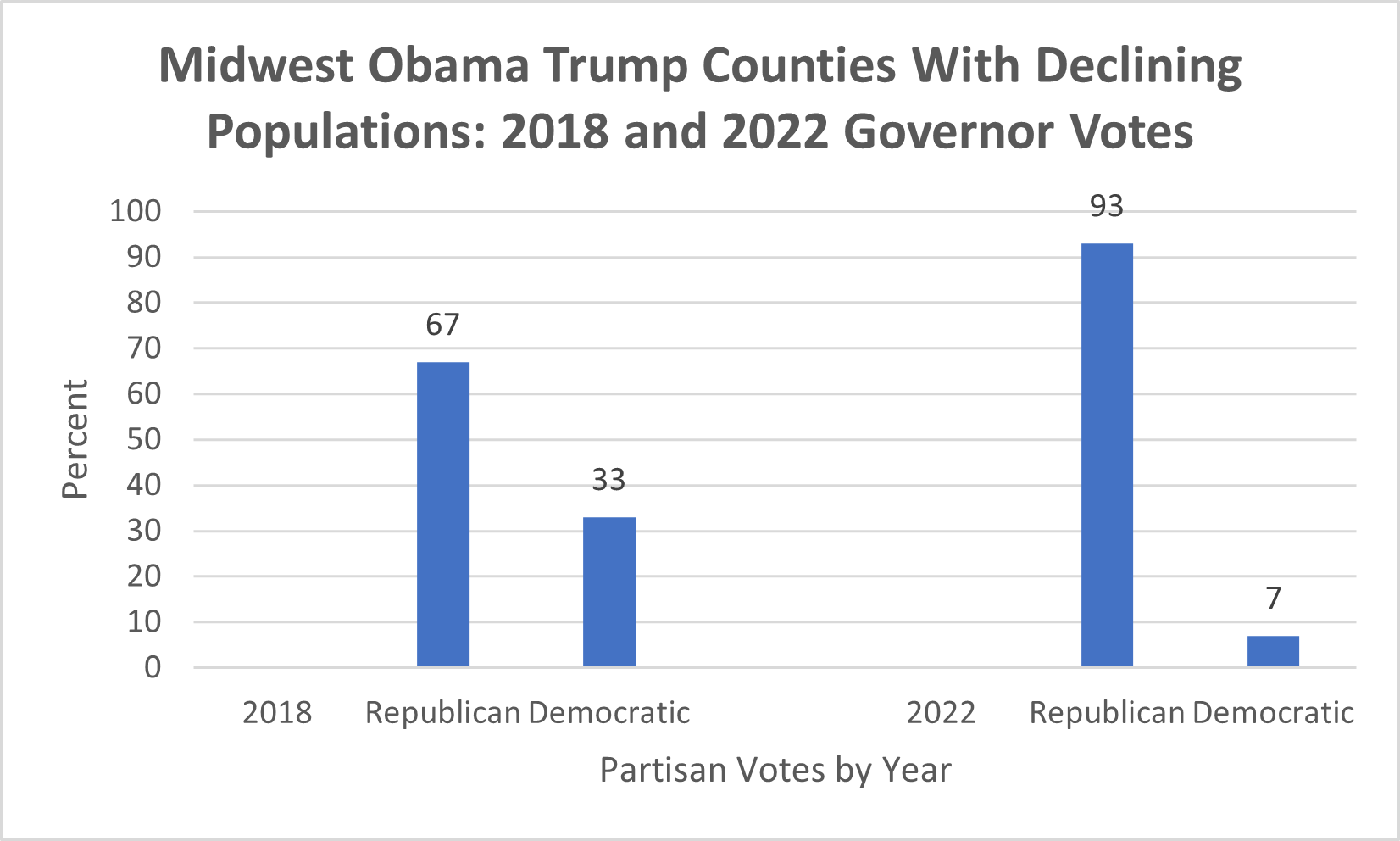Declining Midwest Communities Push Further Right in 2022 Midterms

Though working-class voters continue to be disillusioned, place-based investments can help restore confidence and heal our polarized politics.
The 2016 US presidential election rocked the world when several dozen counties in the three Midwestern “blue wall” states of Pennsylvania, Michigan, and Wisconsin—once reliable blue-collar bastions of Democrats—flipped from supporting Democrat President Obama in prior elections and handed Republican Donald Trump, very narrowly, the Presidency.
Early that same year, Brexit in the UK saw voters in similarly once-reliable Labour strongholds among the industrial redoubts of England’s North (known there as the “Red Wall”), voicing their frustrations and driving Britain out of the EU. These seismic events set off a global scramble to figure out what was making voters of many struggling industrial heartlands within our western democracies so angry and alienated, and what could be done about it.
Since then we have worked to both document the connection between the economic conditions of industrial heartland regions and support for polarizing, sometimes anti-democratic populist movements (the “Geography of Discontent” in this EU analysis), and share strategies on how to attack the root cause of these discontents: the real and perceived economic decline of once-proud and mighty industrial regions.
After both the 2018 Midterm elections and the 2020 Presidential election in the US, we found that residents of those industrial heartland communities that had turned an economic corner were less supportive of the extreme rhetoric and policies of the Trump-led MAGA movement. In contrast, those industrial communities still experiencing population decline and job losses went ever “Trumpier.”
The 2022 US Midterms were another test of this pattern. It was a great relief to many that a cohort of moderate Republicans and independents in key battleground states strategically voted against the most extreme “election-deniers” among Trump’s followers—sending the majority of them to defeat, and undercutting Trump’s potential for further attacks on democracy. However, the underlying pattern of Democrats continuing to lose working-class voters, particularly among residents of industrial communities experiencing long-term economic decline, remains.
With the help of students in a Monmouth College Politics and Government in the Midwest course1 one of us teaches every year, we found after the most-recent 2022 Midterm elections, that the economic and demographic trends in most of these Obama-to-Trump counties were of continued decline and rightward political shifts.
The 113 counties in eight Midwest states that voted for Obama twice and then Trump in 2016 remain characterized by population loss, income declines, an exodus of youth, and low education levels. They are also much less diverse than their respective state populations.
As seen in Figure 1. Of the 113 Obama-to-Trump counties:
- 93 (a whopping 82 percent) had populations whose median ages were higher than their state median age.
- Only eleven of the Obama-to-Trump counties (10 percent) had higher college attainment when compared to their states; 102 counties (90 percent) had lower.
- Over 60 percent of the Obama-to-Trump counties had declining populations.
- Of the 113 Obama-to-Trump counties, only 19 had median household incomes higher than their state’s average, while 94 (83 percent) had incomes below their state’s average.




And these communities in decline have for the most part been moving increasingly towards the Republicans during recent election cycles. Figure 2 illustrates the continued loss of working-class voters among Democrats in communities that continue in relative decline, losing population and seeing diminished family incomes.
Within the 61 percent of Obama-to-Trump counties with declining populations:
- Two-thirds (67 percent) voted for the Republican candidates in the 2018 election. This number increased to 93 percent of counties voting for Republican candidates in 2022.

And within the 83 percent of Obama-to-Trump counties that had incomes below their state’s average:
- In 2018, 64 percent of these low-income counties voted Republican, but 36 percent still voted Democratic. By 2022 in these same low-income counties, 88 percent voted Republican and only 12 percent voted Democratic.

In addition, in 2022, the Republican gubernatorial candidates improved their performance from 2018 in 105 of the Midwest’s 113 Obama-Trump counties.
Across the Midwest, working-class voters in once solidly Democratic-leaning counties that persist in decline have, by and large, shifted their political preferences ever rightward since the 2016 Presidential election. These findings are consistent with other recent research from the American Family Voices project on voters in “Factory Towns” of six key Midwest battleground states, that found badly diminished support for Democratic candidates among the region’s working-class voters.
With another Presidential election looming in 2024, Democrats are trying to repair their standing with working-class voters, in part by delivering new jobs and opportunity to industrial heartlands residents. President Biden’s unprecedented investments in place-based industrial policy—much of it focused on the US Heartland, including last year’s Infrastructure Investment and Jobs Act (IIJA), CHIPS and Science Act, and Inflation Reduction Act (IRA)—represent a pitched effort to win back the blue-collar voters in the heartland.
This same type of focus on kitchen table economic issues also needs to be put to work across all our democracies—by any and all parties. The unprecedented recent place-focused industrial policy investments in people, innovation, and infrastructure in the US industrial heartland is a good thing for our economy and our democracy—as are similar investments in flagging industrial regions in the UK, Europe, and among other allies. As the University of Manchester’s Andy Westwood argued for the Organisation for Economic Development and Cooperation (OECD), “Creating better jobs and supporting firms and industries in ‘industrial heartlands’ not only helps rebuild local economies, reducing disaffection amongst ‘geographies of discontent,' it also makes for more stable national governments as actors in the global economy and in the institutions that govern it.”
Restoring confidence and optimism to residents of industrial heartland regions here and abroad can help heal our polarized polity and make it possible and easier to unite our collective citizenry around the larger challenges democracies face such as Russia’s naked aggression, and China’s increasing menacing pose on the global stage.
- 1Luis Castillo, Spencer Corn, Amanda Dybal, Kailyn Gore, Lily Harlan, Bailey Hill, Alex Kindred, Talia Long, Michael Lord, Halle Majdich, Julia Mheidze, Jadyn Mitchell, Bella Peetz, Lydia Perez, Yuvraj Sidhu, and Madison Squire.

